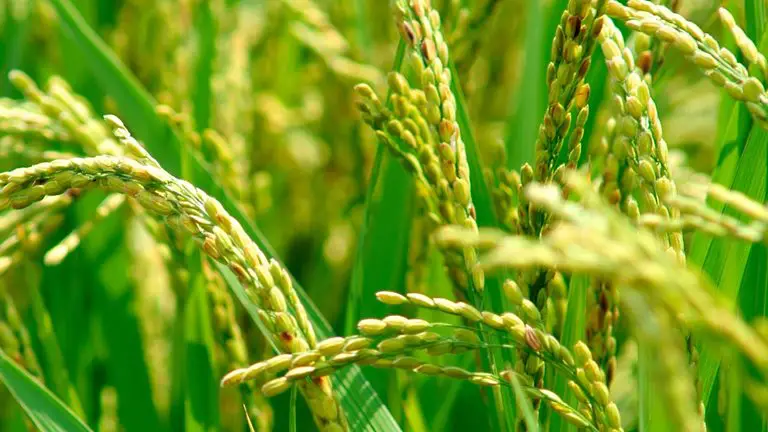
The Second Green Revolution is a term used to describe a new wave of agricultural growth in India that began in the early 1990s. It is characterized by the adoption of new agricultural technologies, such as genetically modified seeds (GMOs), precision agriculture, and drip irrigation. The Second Green Revolution is aimed at addressing the challenges of climate change, water scarcity, and soil degradation, while also increasing agricultural productivity and incomes.
Features of the Second Green Revolution in India | UPSC – IAS
The following are the main features of the Second Green Revolution in India:
- Adoption of new agricultural technologies: The Second Green Revolution is characterized by the adoption of new agricultural technologies, such as GMOs, precision agriculture, and drip irrigation. These technologies can help to increase agricultural productivity while reducing the environmental impact of agriculture.
- Focus on sustainable agriculture: The Second Green Revolution is focused on promoting sustainable agricultural practices. This includes practices that help to conserve water, improve soil health, and reduce the use of chemical fertilizers and pesticides.
- Emphasis on research and development: The Second Green Revolution is supported by a strong emphasis on research and development. This is aimed at developing new agricultural technologies and practices that can help to meet the challenges of climate change, water scarcity, and soil degradation.
Complications
The Second Green Revolution is not without its challenges. Some of the concerns associated with the Second Green Revolution include:
- Increased dependence on corporate agriculture: The adoption of new agricultural technologies, such as GMOs, can lead to increased dependence on corporate agriculture. This is because small farmers may not be able to afford the costs of these technologies.
- Environmental risks: Some of the new agricultural technologies, such as GMOs, pose potential environmental risks. For example, GMOs could cross-pollinate with wild plants, leading to the creation of new superweeds.
- Social inequality: The Second Green Revolution could lead to increased social inequality between farmers who are able to adopt new technologies and those who are not.
Benefits | UPSC – IAS
The Second Green Revolution has the potential to provide a number of benefits to India, including:
- Increased agricultural productivity: The Second Green Revolution could help to increase India’s agricultural productivity by several times. This is essential to meet the food needs of India’s growing population.
- Reduced environmental impact: The Second Green Revolution could help to reduce the environmental impact of agriculture by promoting sustainable agricultural practices. This is important for addressing the challenges of climate change, water scarcity, and soil degradation.
- Improved farmer incomes: The Second Green Revolution could help to improve the incomes of farmers by increasing agricultural productivity and reducing costs. This could lead to a reduction in rural poverty.
Implications
The Second Green Revolution has a number of implications for India, including:
- Increased need for investment: The Second Green Revolution will require significant investment in research and development, as well as in the adoption of new agricultural technologies.
- Need for capacity building: Farmers will need to be trained in the use of new agricultural technologies. This will require investment in capacity building programs.
- Need for policy reforms: The government will need to implement policy reforms that support the adoption of new agricultural technologies and sustainable agricultural practices.
Effects in India | UPSC – IAS
The Second Green Revolution is still in its early stages, but it has already had a number of positive effects in India. For example, the adoption of new agricultural technologies has helped to increase agricultural productivity in some regions. Additionally, the focus on sustainable agriculture has led to a reduction in the use of chemical fertilizers and pesticides in some areas.
Effects for the people
The Second Green Revolution has the potential to have a positive impact on the people of India by increasing agricultural productivity and reducing poverty. Additionally, the focus on sustainable agriculture could lead to improved health and environmental outcomes for the people of India.
Effects for children
The Second Green Revolution could have a positive impact on children in India by improving access to food and nutrition. Additionally, the focus on sustainable agriculture could lead to a healthier environment for children.
Effects for the underprivileged
The Second Green Revolution could have a positive impact on the underprivileged in India by increasing agricultural productivity and incomes. Additionally, the focus on sustainable agriculture could lead to improved health and environmental outcomes for the underprivileged.
Effects for women
The SGR could have a positive impact on women in India by increasing their employment opportunities and incomes. Additionally, the focus on sustainable agriculture could lead to improved health and environmental outcomes for women.
Solutions
The following are some solutions to the challenges associated with the Second Green Revolution:
- Promote public-private partnerships: Public-private partnerships can help to accelerate the development and adoption of new agricultural technologies.
- Invest in research and development: The government needs to invest in research and development to develop new agricultural technologies that are affordable and accessible to small farmers.
- Implement policy reforms: The government needs to implement policy reforms that support the adoption of new agricultural technologies and sustainable agricultural practices.










